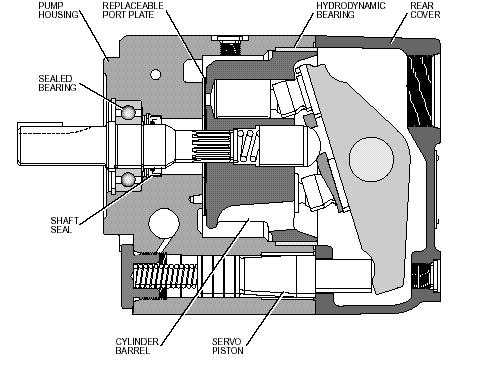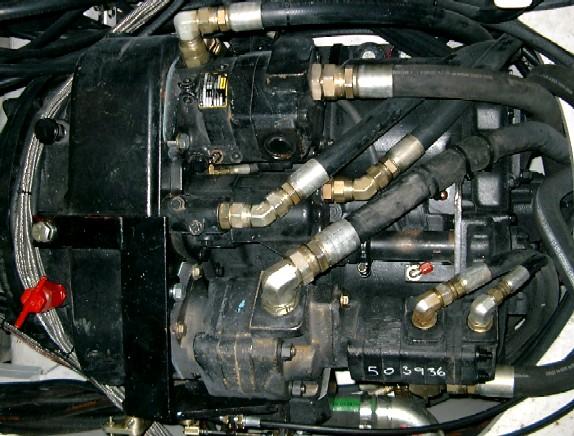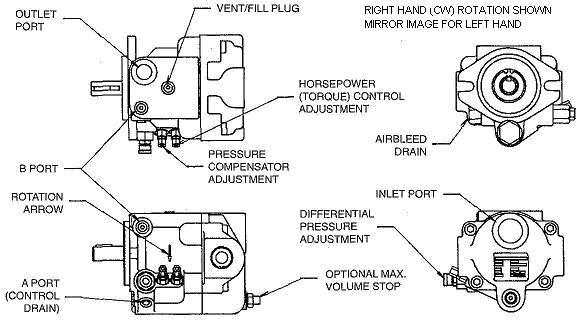
2 minute read
Pumps and Mountings Steering/Brake Pump
PUMPS AND MOUNTINGS
STEERING/BRAKE PUMP
The steering/brake pump is an axial piston type that utilises a pressure control that provides a flat cut off in flow at a preset screw adjustable pressure level. While system pressure is below the pressure setting, full flow is available from the pump. When system pressure reaches or exceeds the preset value the pump is de-stroked to maintain the pressure level. The compensated steering/brake pump is mounted on the rear of the main hydraulic pump and is driven via the main pump drive shaft which in turn is driven from the transmission.
The compensated pressure setting should be checked by the operator daily, by checking the pressure on the steering and brake accumulator gauges.
To adjust the steering/brake pump compensated pressure setting:
1. Park the machine in a clear area, apply the park brake and install the articulation lock and chock the four wheels. 2. With the engine running at idle, release the park brake, access the steering/brake pump by removing the transmission cover and locate the pressure compensator adjustment on the underside of the pump housing. 3. Loosen the adjusting screw lock nut and rotate the adjusting screw clockwise to increase the compensating pressure or counter-clockwise to decrease the compensating pressure. 4. Pressure can be observed at either the steering or brake accumulator pressure gauges located in the operator’s compartment, alternatively a gauge may be fitted into the test port on the steering/brake manifold. 5. When the correct pressure is set tighten the adjusting screw lock nut.
Pressure Compensated Steering and Brake Pump
Pressure Compensated Steering and Brake Pump
Compensator Pressure Adjustment Screw Flow Control Adjustment
Steering and Brake Pump



Installation Pump Priming:
When mounting the pump on this system the fluid level is below the mounting position, the following startup procedure is recommended.
1. Put approximately two cups of hydraulic oil in the pump case to lubricate parts during priming. 2. Remove plug from air bleed drain port. 3. Charge the hydraulic tank via the recharge valve located on the top of the tank to ensure there is 50 kPa of air pressure in the tank to assist in pushing the hydraulic fluid through the suction hose. 4. Refit the air bleed port once the fluid is coming out. 5. Start motor and run until pump primes or a maximum of 30 seconds. If pump does not prime in 30 seconds, stop motor and repeat until pump primes.
DO NOT run the pump if in a dry state as this will reduce its service life.









